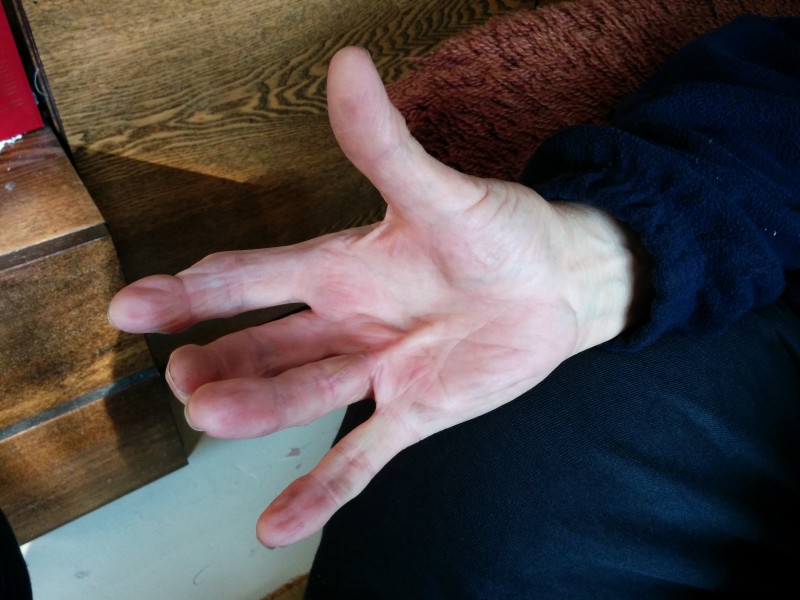
Dupuytren's contracture surgery is a significant step towards regaining hand function and improving your quality of life. This article dives deep into the post-operative phase, providing you with insights and guidance on what to expect after undergoing this procedure.
Dupuytren's contracture is a hand condition that affects the connective tissues beneath the skin of the palm and fingers. When nonsurgical treatments are no longer effective, surgery becomes a viable option. However, the journey to recovery extends beyond the operating room.
Preparing for the Recovery Period
Follow Medical Advice
After the surgery, your surgeon will provide specific instructions for your recovery. These may include wound care guidelines, medications, and restrictions on hand movement.
Arrange for Assistance
Enlist the support of family or friends to help with daily tasks during the initial recovery phase. Simple activities like cooking and dressing may require assistance.
Prepare Your Living Space
Make your living space recovery-friendly. Clear pathways, rearrange commonly used items to waist level, and ensure you have necessary supplies within reach.
Immediate Post-Operative Period
Managing Pain and Discomfort
Pain and discomfort are common after surgery. Your doctor will prescribe pain medication to help manage these sensations. Follow the prescribed dosage and report any concerns promptly.
Dressing and Wound Care
Proper wound care is crucial for preventing infection and promoting healing. Keep the surgical site clean and dry, and follow the dressing change schedule provided by your medical team.
Hand Elevation and Movement
Elevate your hand above heart level to reduce swelling. Gentle hand exercises, as instructed by your healthcare provider, will help maintain flexibility without straining the healing tissues.
Rehabilitation and Physical Therapy
The Importance of Physical Therapy
Physical therapy plays a pivotal role in your recovery. Your therapist will design a personalized rehabilitation plan to gradually restore hand function and mobility.
Hand Exercises and Range of Motion
Engage in prescribed hand exercises to improve range of motion. These exercises prevent stiffness and promote circulation, aiding in the healing process.
Gradual Return to Activities
As you progress, your therapist will guide you through a gradual return to daily activities. Patience is key, as pushing too hard too soon could hinder your progress.
Potential Complications and When to Seek Help
Recognizing Signs of Infection
Monitor the surgical site for signs of infection, such as increased redness, warmth, or discharge. If you notice any concerning changes, contact your healthcare provider immediately.
Addressing Excessive Swelling
While some swelling is normal, excessive swelling can impede recovery. Elevate your hand, apply ice as directed, and follow your doctor's recommendations to manage swelling.
Dealing with Impaired Sensation
Changes in sensation are common after surgery. Numbness or tingling should gradually improve, but if it persists or worsens, consult your medical team.
Patience and Long-Term Recovery
Scar Management
Scarring is a natural part of the healing process. Massaging the scar with lotion and protecting it from sun exposure can help minimize its appearance over time.
Timeframe for Full Recovery
Each individual's recovery timeline varies, but expect a period of several weeks to months before experiencing the full benefits of the surgery.
Monitoring Progress
Regular follow-up appointments with your surgeon will allow them to monitor your progress and address any concerns that arise.
Lifestyle Modifications
Ergonomic Practices
Incorporate ergonomic practices into your daily routine to prevent strain on your hands. Using proper hand posture and taking breaks during repetitive tasks can make a significant difference.
Healthy Habits for Hand Care
Maintain hand health by keeping the skin moisturized, avoiding excessive force during activities, and wearing protective gloves when necessary.
Preventing Recurrence
While surgery can provide significant relief, it's important to note that Dupuytren's contracture may recur. Discuss preventive measures with your medical team.
Embracing the Positive Changes
Improved Hand Function
As you progress through the recovery process, you'll likely notice improved hand function, allowing you to perform tasks with greater ease and efficiency.
Enhanced Quality of Life
The surgery's success can lead to an enhanced quality of life, enabling you to engage in activities that were once difficult or impossible.
Restoring Confidence
Regaining hand function can have a profound impact on your self-esteem and confidence. Embrace these positive changes as you continue your journey to recovery.
Dupuytren's contracture surgery marks the beginning of a transformative journey towards restored hand function and an improved quality of life. By following medical advice, engaging in physical therapy, and practicing healthy habits, you can navigate the recovery process successfully. Embrace the positive changes and look forward to a future with newfound hand capabilities.
Imran Khan's Party Raises Concerns Over Ex-Pak-PM's Safety, Health in Jail
Embracing the Natural Way: Discover the Benefits of Vivo Barefoot Shoes!
If you want to avoid the eye flu, then include these 6 types of foods in your diet